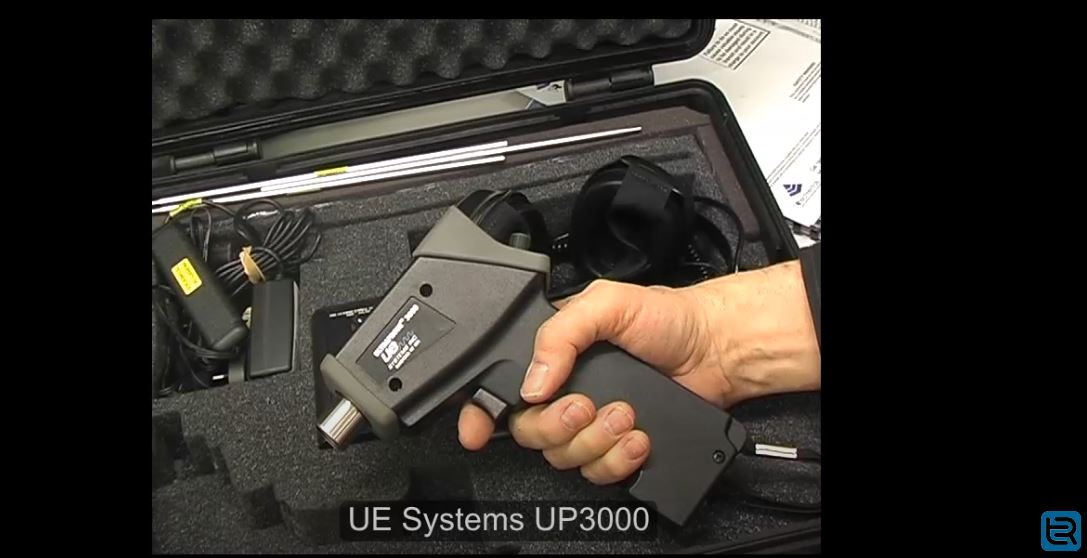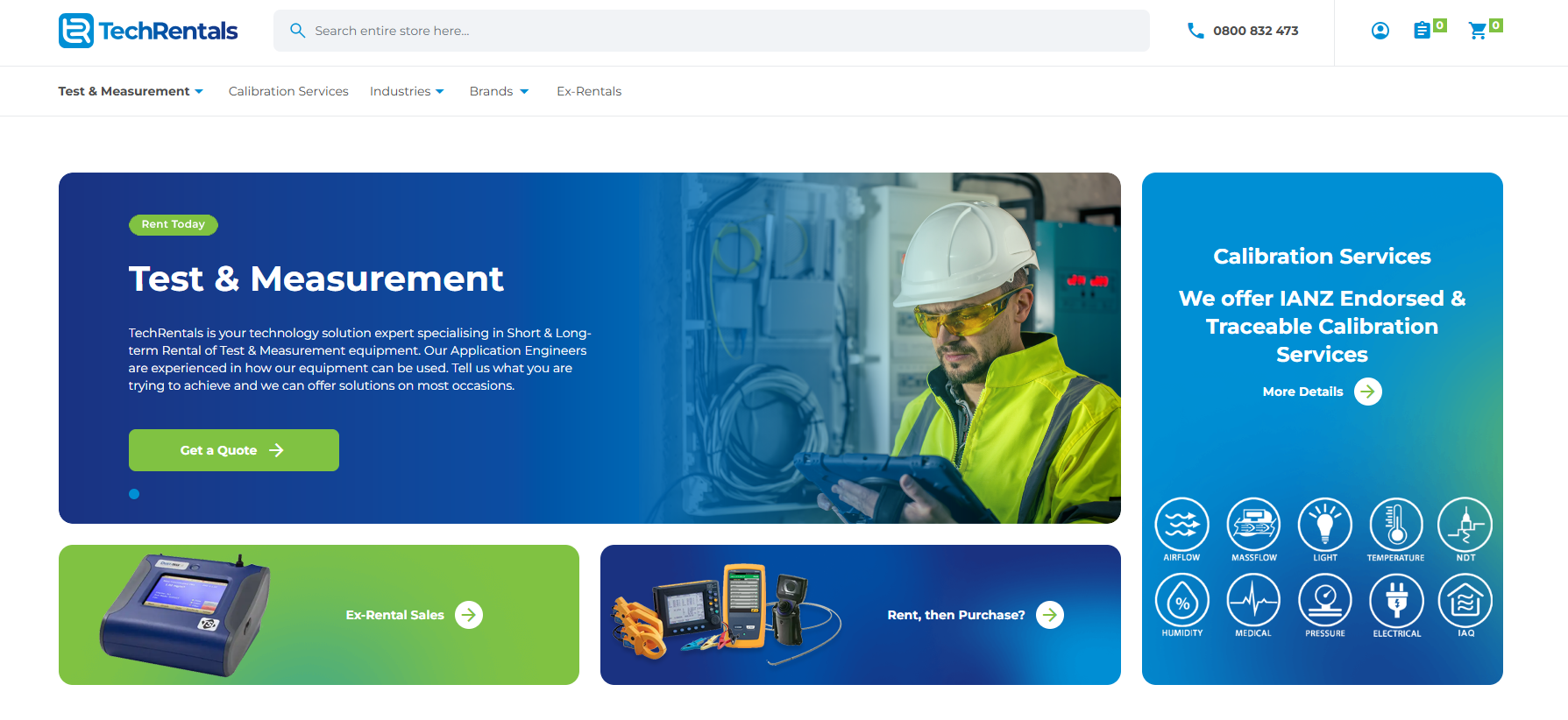Testing Functions Case Study
Measuring tools: Fluke TIR2 FT Thermal Imager
Operator: Regan Brown, Principal, G.B. Group General Contractors
Inspections: Residential and commercial buildings; insulation; ceramic tile; windows, siding, and exteriors
From storm damage to every- day plumbing and roof leaks, moisture damage in residential and commercial buildings can be very expensive. The key is identifying and locating moisture problems before secondary damages escalate. Within the last few years, infrared cameras (thermal imagers) have become powerful tools for locating moisture problems in buildings. Instead of searching for moisture inch- by-inch with a moisture meter, an infrared camera provides the ability to scan an entire room in a matter of minutes. By locating the thermal changes from evaporative moisture cool- ing (EMC) in drywall, carpet, ceiling tiles, etc., inspectors can moisture map the entire building and isolate problems before providing an estimate for remediation. This article discusses the parameters and limitations when using infrared cameras to detect moisture inside buildings and homes.
How it works
An infrared camera can detect trapped moisture beneath multiple layers of materials without any surface indica- tion, even when the surface is completely dry and covered with paint, flooring or other finish. However, an infrared camera is not a moisture meter, nor does it “see” moisture. The temperature differential caused by evaporative moisture cooling on a given surface creates unique thermal patterns that can be located with a sensitive infrared camera. The evaporative moisture cools the surface of the material and creates a low-temperature thermal anomaly when compared to the surrounding dry materials. This evaporation effect applies primarily to interior inspections where the temperature and other elements are controlled. Exceptions include certain types of roof systems, where wet material in the ceiling creates a warmer thermal pattern as the sun heats water trapped in the roof materials.
Tips for accurate measurements
Although building interiors are usually controlled environments, inspectors must still account for several factors.
Air temperature
Cold and warm air can create both false positives and false negatives. Warm supply air can mask wet materials by warming the surface enough to distort or negate the thermal pattern created by evaporation. In comparison, the cold air from an air conditioning supply can create a thermal pattern similar to that of a moisture problem, thus creating a false positive. During a water loss, the drying equipment inside the structure creates an enormous amount of heat. Numerous air movers direct high volume, high-pressure warm air to the wet surfaces, increasing the chance of a false negative. The warm air from the air movers can mask the cooler thermal pattern created by EMC, giving the user the impression the material is dry. And although the ambient air alone does not adversely affect the thermal pattern of wet to dry, placement of the equipment can have an impact.
Insulation
Missing or compressed wall insulation can mask thermal patterns, creating both false positives and false negatives. Missing wall insulation on a warm, sunny day can cause the materials and moisture inside a wall cavity to head up to a point where the thermal pattern becomes negated or distorted. In comparison, on a cold day, missing wall insulation can create a cooler thermal pattern that is similar to that of wet materials. In both situations, verification of the presence of moisture must be confirmed with a moisture meter.
Ceramic Tile
Most interior building materials have high emissive values, making them perfect candidates for thermal imaging. However locating moisture beneath ceramic tile and certain other floor and wall coverings can be difficult. Because the moisture in most cases is actually in the sub-floor and not in the floor covering itself, the tempera- ture changes in the web sub- floor may not transfer through to the surface of the floor covering. Unwanted reflec- tions make matters worse by distorting the true thermal pattern.
Windows, sliding, and exteriors
When inspecting for exterior moisture infiltration from windows, siding or other exterior components, it can take an hour or longer after wetting for a thermal pattern to become apparent on the interior. In one example, the point of intrusion was believed to be above a living room window. The exterior wall was soaked with a sprayer per the ASTM standard. After 20 minutes there was no sign of water intrusion on the interior wall or floor. The wall was soaked again for an additional 10 minutes and still there was no thermal pattern evident. It wasn’t until nearly an hour after the initial spay test that the thermal patter from the wet stucco and insulation was visible. Although the moisture penetrated the stucco within minutes after the first spray test, it took almost an hour for the cooler evaporative temperatures to reach the surface of the interior wall. We observe temperature changes from wet to dry as slight at 0.5 °F to greater than 10 °F. During the drying of a building, the temperature differential between wet and dry will go up or down depending on the ambient temperature of the building and moisture content of the material. For the most part, temperature differentials are greatest the first 24 to 36 hours.
Conclusion
The financial impact of unde- tected moisture problems in buildings is tremendous and on the rise. While moisture meters continue to provide final confirmation of wet and dry materials, the need to locate moisture in buildings accu- rately and efficiently remains a challenge. By using infrared technology, building inspec- tors, contractors, and remedia- tors can reduce liability and inspection time and potentially increase their bottom line. Though still not a “solve-all” tool, an infrared camera is without doubt a very powerful piece of inspection equipment.
Tools Useful for conducting a water test
- - Thermal imager
- - Moisture meter for confirmation of results
- - Flashlight
- - Digital or 35 mm camera
- - Small notepad and pen for taking notes
- - A paint brush to move away dirt and debris from window and door tracts etc.
- - A dust mask to prevent inhaling dirt and dust in confined spaces such as attics.
- - Booties to cover shoes when repeated entrance and exits into residences is necessary.
- - Ladders that can extend to the necessary building height.
- - Water hose with spray nozzle or calibrated spray rack.
- - Duct tape and plumbers putty for sealing up holes during testing.
- - Caulking and caulking gun for temporary repairs if necessary.
Fluke. Keeping your world up and running.® Fluke Corporation PO Box 9090, Everett, WA 98206 U.S.A. Fluke Europe B.V. PO Box 1186, 5602 BD Eindhoven, The Netherlands For more information call: In the U.S.A. (800) 443-5853 or Fax (425) 446-5116 In Europe/M-East/Africa +31 (0) 40 2675 200 or Fax +31 (0) 40 2675 222 In Canada (800)-36-FLUKE or Fax (905) 890-6866 From other countries +1 (425) 446-5500 or Fax +1 (425) 446-5116 Web access: http://www.fluke.com
©2007 Fluke Corporation. Specifications subject to change without notice.



